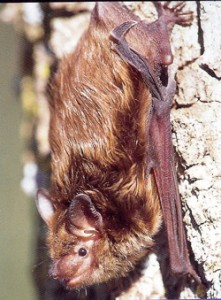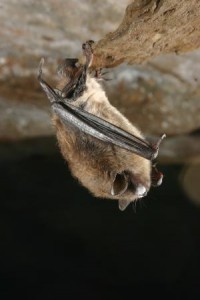Minnesota Bat Removal
Minnesota has seven species of Bats, three of which roost in trees and migrate South during cold weather. The others roost in caves, abandoned mines and buildings, where they hibernate in deep sleep during the winter. In summer all eat flying insects on the wing at night and sleep in roosts during the day. Wing span ranges from eight inches to sixteen inches and all Minnesota bats weigh one ounce or less.
Bats are beneficial and gentle creatures but occasionally they become a nuisance and get “too close for comfort”. If this occurs, DON’T PANIC! All the negative stories and tales you’ve heard about bats are greatly exaggerated.
Bats have earned an unfair reputation in movies and books as scary, blood-sucking creatures. In reality, bats help humans by eradicating pests and helping to pollinate plants.
Bats are beneficial mammals because they are efficient predators of insects. A colony of 100 little brown bats, the most abundant species in Minnesota, may consume hundreds of thousands of mosquitoes and other small insects each summer. Big brown bats, which frequent agricultural areas, may consume crop pests and thus reduce insect damage to a variety of fruits and vegetables.
The number of insects consumed annually by one million bats is staggering: just under 700 tons. These bats have extraordinary value in maintaining the health of nearly all terrestrial and aquatic ecosystems. And since many of the insects eaten by bats are crop pests, losing large numbers of bats will likely have expensive impacts on agriculture.
Bats provide tremendous value to the U.S. economy as natural pest control for American farms and forests every year, while playing an essential role in helping to control insects that can spread disease to people, but their numbers are in decline due to the threat of White-Nose Syndrome and they need to be protected from harm caused by our human activities.
In fact, The US bat population is in crisis. Over the past seven years, as many as 6.7 million North American bats have succumbed to white nose syndrome, an illness caused by an invasive fungus that originated in Europe. Conservationists warn the loss of these vital insect-eating creatures could have a huge, and costly, impact on US agriculture.
New research forecasts regional extinctions within two decades for one of our most common bat species, the little brown myotis, because of White-nose Syndrome. Read press releases from BCI and Boston University.
It hasn’t reached Minnesota yet, but wildlife researchers know it can spread fast and are watching for it. If WNS continues to take such a huge toll, the environmental and economic costs will be enormous. If the disease kills a large number of bats in Minnesota, it could take years for the populations to recover.
One of the hardest-hit is the little brown bat, once the most common bat in the Northeast and found across the country, in much of Canada and north into Alaska. So far, biologists have been unable to prevent its spread. The spread is epic at this point and there is no indication it’s slowing down.
Bats may make you squirm, but if you notice bats in your home, or suspect you have a bat infestation, it is wise to call a Minnesota Wild Animal Management Expert that has experience in handling bat removals safely and in a timely manner.
Hiring a professional company guarantees the safety of you and your loved ones, along with repair and prevention services to keep bats out for good. They can also properly and safely remove the droppings and sanitize the area, ensuring it is clean.






